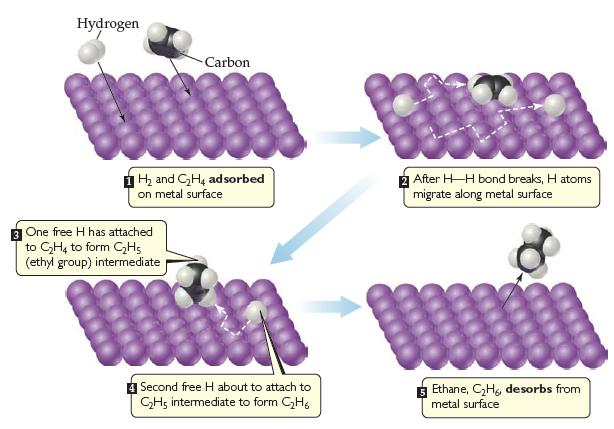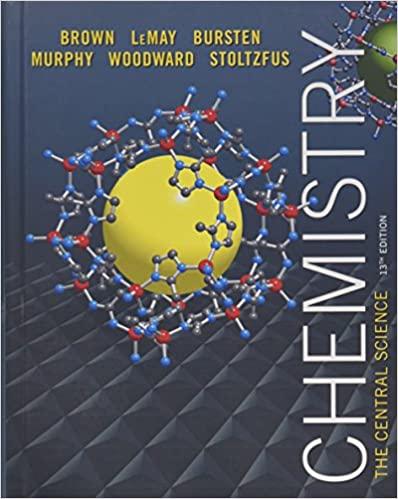As shown in Figure 14.24, the first step in the heterogeneous hydrogenation of ethylene is adsorption of
Question:
As shown in Figure 14.24, the first step in the heterogeneous hydrogenation of ethylene is adsorption of the ethylene molecule on a metal surface. One proposed explanation for the “sticking” of ethylene to a metal surface is the interaction of the electrons in the C—C p bond with vacant orbitals on the metal surface.
(a) If this notion is correct, would ethane be expected to adsorb to a metal surface, and, if so, how strongly would ethane bind compared to ethylene?
(b) Based on its Lewis structure, would you expect ammonia to adsorb to a metal surface using a similar explanation as for ethylene?

Step by Step Answer:

Chemistry The Central Science
ISBN: 9780321910417
13th Edition
Authors: Theodore E. Brown, H. Eugene LeMay, Bruce E. Bursten, Catherine Murphy, Patrick Woodward, Matthew E. Stoltzfus





